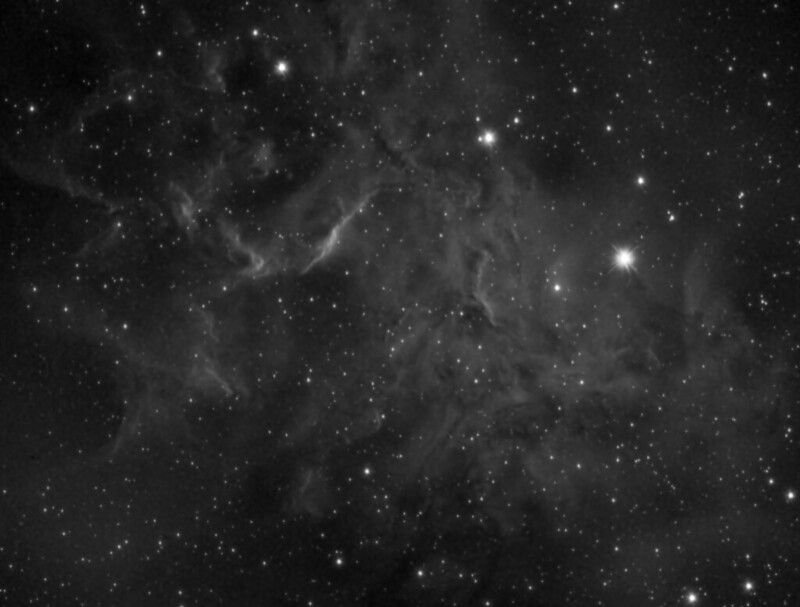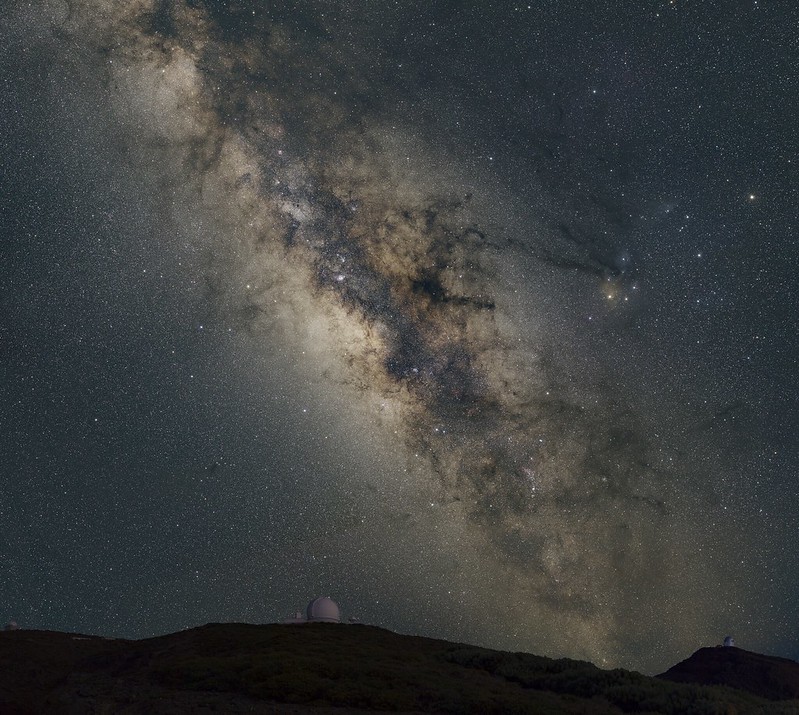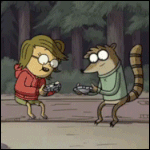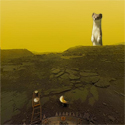|
EngineerJoe posted:I got a polar scope and a motor drive for christmas so I tried taking a few pics (and stacking them). I honestly have no idea what I'm doing but I'm pretty happy with the result.  Vladimir Poutine posted:If anyone's interested, Neptune will be 5 degrees below the moon on Wednesday night and on Friday night Uranus will be 5 degrees above the moon. Just scan around the area with binoculars and you'll find them pretty quickly. Both planets aren't visible to the naked eye so I don't normally bother to look for them unless they're near something more obvious.
|
|
|
|

|
| # ? May 20, 2024 19:21 |
|
Vladimir Poutine posted:If anyone's interested, Neptune will be 5 degrees below the moon on Wednesday night and on Friday night Uranus will be 5 degrees above the moon. Just scan around the area with binoculars and you'll find them pretty quickly. Both planets aren't visible to the naked eye so I don't normally bother to look for them unless they're near something more obvious. Thank you! I only have a crappy 8x40 and haven't been able to find those two planets yet. I'll also try using this: http://earthsky.org/tonight/moon-and-uranus-in-front-of-pisces
|
|
|
|
Just ordered myself a Skywatcher Explorer-130P Parabol Newton 130/650, also picked up a 50% grey-filter as part of the bundle. Time to get reading up before it arrives!
|
|
|
|
Pleiades work-in-progress: About 2 hours of integration time (18x400s). I asked around on Reddit and it seems the double diffraction pattern is likely due to A) poor focus and B) collimation issue. The image is also strangely lacking in color, so I may have messed up the debayering somehow. And finally, I think the secondary may have fogged a little since the nebulosity is awfully washed out by the star blooming. Also some coma issues because my corrector isn't at the right distance, yay! That said, this is the first time I've gotten my guide cam setup to work, so I'm pretty pleased that I can hit 400s with minimal trailing (just that irritating coma). Looks like cloudy skies for another week, so I'm going to pull the scope inside and work on collimation and a dew heater.
|
|
|
|
polyfractal posted:Pleiades work-in-progress: Honestly, I like that picture.
|
|
|
|
IC405 in HA, probably the first thing I've done since getting back from La Palma in June, it's been a long wait for a clear night I could actually use. IC405 HA by Tim Powell, on Flickr IC405 HA by Tim Powell, on FlickrNot great, I should have used longer exposures for better contrast (this was 19 x 600), also TGVdenoise and me are having arguements.
|
|
|
|
A brief report on the evening news alerted me to the fact that a bunch of planets are all supposed to be visible in the morning sky over the next few days and my wife decided that if I was prepared to get up before dawn to check it out then so would she. So I dusted off the little 90mm and got it ready. Cute little thing shows quite a lot of detail. I was shocked just how vibrant it could be when I was lining up the finder on a distant tree. I just hope the humidity drops and the clouds stay away. It occurred to me that I've not yet seen Mercury, Mars or Venus yet so I'm looking forward to it (especially Mars). My wife has only seen Jupiter so fingers crossed I can give her a real show. Anyway here's a pic of the thing: The mount is significantly more sturdy than it looks. 
Carth Dookie fucked around with this message at 10:40 on Jan 22, 2016 |
|
|
|
Thanks for this thread everybody, just finished reading it front to back and got inspired to throw my lovely mirrorless camera with it's lovely kit lens on my lovely plastic tripod and see what I can get. Orion Nebula  EOS M with 55mm f5.6 Stack of 40 5" light frames, 20 darks, 20 bias. Missed focus, and loads of other issues, but it definitely got me excited collecting this. Should I be avoiding the "noise reduction" option that Canon has on images over 1 second? As far as I can tell it does a dark frame subtraction after each image. Should I just accept the noise as it comes out of the camera normally and trust DSS to get my SNR right? There's so much to learn! I'm already seeing the need for PixInsight, it's amazing how much data is hiding in these master light frames.
|
|
|
|
Seems I successfully jinxed myeslf. When I went to bed, the sky was blue from horizon to horizon. I got up well before dawn and awoke to total cloud cover. Hopefully the weather is kinder tomorrow morning and I can convince the wife to have another go.
|
|
|
|
darth cookie posted:A brief report on the evening news alerted me to the fact that a bunch of planets are all supposed to be visible in the morning sky over the next few days and my wife decided that if I was prepared to get up before dawn to check it out then so would she. So I dusted off the little 90mm and got it ready. Cute little thing shows quite a lot of detail. I was shocked just how vibrant it could be when I was lining up the finder on a distant tree. I just hope the humidity drops and the clouds stay away. It occurred to me that I've not yet seen Mercury, Mars or Venus yet so I'm looking forward to it (especially Mars). My wife has only seen Jupiter so fingers crossed I can give her a real show. Anyway here's a pic of the thing: Venus, Mars and Mercury won't be all that impressive right now. Venus is on the opposite side of the Sun now, so it's going to be a small, almost round featureless disk. Mars is similarly far from Earth, although if you're lucky you might see some surface markings, especially if Syrtis Major is on the meridian. Mercury is probably going to be the most interesting of the bunch, if you catch it later in this apparition you might see a fat crescent. They're nice to bag in, but for Venus and Mars especially there's much better times to see them.
|
|
|
|
polyfractal posted:Pleiades work-in-progress: yeah that's gorgeous
|
|
|
|
Low-Pass Filter posted:Thanks for this thread everybody, just finished reading it front to back and got inspired to throw my lovely mirrorless camera with it's lovely kit lens on my lovely plastic tripod and see what I can get. I'm a pretty newbie astrophotographer so far but here are my thoughts. If you're doing manual darks, you can turn off the noise reduction, which is doing exactly what you said (doing a dark frame inside the camera). Depending on what you're doing (or if you care) you may not even need darks. I've seen conflicting opinions on this on the Internet. Supposedly the read noise from newer Canon DSLRs is so low that people say darks are unnecessary. Specifically people have called out the 7D Mark II's sensor as game-changing. (see here) I just got one so I'm trying stuff with no darks for the time being. I'm still figuring out how to post-process though. On that note I also see how PixInsight is useful. I'm just using a combination of DSS/Registax/PIPP/Autostakkert & Photoshop (depending on if I'm doing planetary or DSO) and getting some halfway decent shots. DSS frustrates me though so I'm thinking of checking out Images Plus for stacking. My biggest issues are fighting light pollution (I live near DC) and learning how to do the curve-stretch/leveling stuff. I have an Astronomik CLS filter which helps with the light pollution but I'm still figuring out how to edit the photos to pull the detail out of them. I have a PixInsight trial license and am planning on watching these videos to start out as they come highly recommended. I have all my stuff on Flickr if anyone wants to take a look.
|
|
|
|
darth cookie posted:Seems I successfully jinxed myeslf. When I went to bed, the sky was blue from horizon to horizon. I got up well before dawn and awoke to total cloud cover. Welcome to my world. I live 3 miles from the beach and it's a 1.5 hour drive to anywhere outside of the city. I tried waking up a few mornings to see Comet Catalina, but it's way too close to the dew point so overcast and fog every time. Not even bothering with the five planets viewing. I'll catch what I can individually in the spring/summer/fall nights this year.
|
|
|
|
Seqenenra posted:Honestly, I like that picture. pwnyXpress posted:yeah that's gorgeous Thanks Been doing some research, I think some of my recent problems (low contrast, halos, coma) are the particular QHY8 that I have. I went investigating the correct offset distance for the coma corrector...and it doesn't work. The coma is still pretty bad. On further investigation, I realized m QHY8's nosepiece is different from stock. I think it's actually a permanently installed dew heater ring, which someone wired directly into the camera's power. It's really well done, painted black, so I just assumed it was stock. But that throws the offset off a bit. Related, I think the big halos that I've been getting are reflections from the UV/IR cut glass off the coma corrector. Internet forums seem to suggest that moving the filter farther from the sensor helps, at the expense of more chance of frosting up the (unsealed) sensor. And some of the low contrast may actually be frost anyway, despite the heater. Going to fire it up this weekend indoors to see if it fogs. Edit: Jekub posted:IC405 in HA, probably the first thing I've done since getting back from La Palma in June, it's been a long wait for a clear night I could actually use. This is lovely! I'm jealous that you can hit 10-20 minutes without blinking. Someday, someday... 
|
|
|
|
polyfractal posted:I'm jealous that you can hit 10-20 minutes without blinking. Someday, someday... Having a permanent observatory setup helps, but really if you have the mount for it and are willing to spend the time on getting your alignment right at the start of the night it's very achievable. I am very much sold on Sequence Generator Pro and it's framing and mosaic wizard plugin, it's taking a great deal of work out of my imaging process. Set your profile up (camera, filters, mount etc), call up a picture of the object or region you want, click and drag to frame what you want, single shot or mosaic, generate a sequence and off you go. It will plate solve your current location, slew to what you want to image, centre it then take the frames you have requested. I even have it dealing with meridian flips for me, fully automated. It will figure out between which frames it needs to do the flip, then recentre the image and carry on without any input. The sequences can be saved as well, so the next night you can carry on exactly where you left off, no stress. It's completely magic for mosaic shots. If I am away from home then I have a local plate solver installed through SG pro so it all works without needing a network connection. European Astrofest in London next month, lots of good talks, several from the New Horizons team which I'm looking forward to, and I have a budget this year as well for some small bits. A new dew heater controller and possibly some better NB filters if I get carried away.
|
|
|
|
Question about mounts: 1) Most of the guides and comments I read online point towards a GOTO GEM mount, but I've seen in my craigslist area a number of decent sized Cassegrains mounted on fork type mounts for what seem to be good prices. Are these adequate if my goal is short to intermediate length photos (say, 30-60 seconds)? Do I have to wedge them for the tracking to work OK, or can I leave them in their alt-az configuration and let it use both motors to track? Are Cassegrains too long focal length for what I'm trying to do? Specifically I'm asking about a 8" Meade SCT LX200 or similar 2) Are the GEM mounts that have optional motors worth a drat? As far as I can tell there's no way to ever computerize them, is this correct? I'm seeing a number of CG-4's and LX70's for decent prices used, and the motor kits aren't too expensive, but I don't know if they get outgrown quickly without the GOTO and computerization. Otherwise, it looks like the cheapest mount that isn't bad is the Celestron Advanced VX at $800 or so. I'm trying to follow the 70% rule towards the mount, and budget is about 1k, but if I can pick up something that will be of intermediate use for half that, it's pretty compelling.
|
|
|
|
hannibal posted:I'm a pretty newbie astrophotographer so far but here are my thoughts. Thanks! Tried some shots without the Canon NR, and it seems to make no obvious difference. If anything DSS works better without it, if marginally. GOod to know though; cuts my capture time in half!
|
|
|
|
Low-Pass Filter posted:Question about mounts: Question one, yes, but normally you would use a wedge with a fork mount which turns it into an EQ, you can then get good long exposure shots with them. I have no idea what the periodic error is like on such mounts, and you need to ensure the mount in question supports operating in EQ mode, and preferably supports autoguiding but they are used for astrophotography. Question 2, no, not in my experience. The important questions when we consider what mount is going to be best suited to you are :
My general advice for anyone looking to get started these days is not to use a telescope, if you have a DSLR and a selection of lenses then that is more than enough to get going. There are a wealth of small mounts on the market which will support a DSLR for long exposure astrophotography and focal lengths up to 200mm. I generally try to steer people away from diving strait into the deep end with large scopes, it's going to be a painful learning curve. Not mine, but a mosaic from one of my astronomy society colleagues from our La Palma trip, taken with a canon DSLR, 50mm lens and an astrotrac :  La Palma Milkyway 2015 by John Murphy, on Flickr La Palma Milkyway 2015 by John Murphy, on Flickr
|
|
|
|
The specific mount I was looking at has the RJ11 (or whatever it is) jack for an Autoguider, so I'm ASSUMING it has some mode that works for relatively long tracking. That said, I think I agree with your statement of sticking with my DSLR and getting my feet wet that way. There seems to be plenty to learn on the processing side before I'd really gain anything from a full fledged setup except for dissappointment. BUT, I would really like to graduate from a lovely borrowed Meade to something for primarily visual use, and plan on getting a separate DSO rig later on. If I picked up a 6" or so reflector on a EQ with the motor kit, could I use that as a motorized mount for my DSLR with a 135mm or so lens? The Astrotrac at $600 is a hard sell if I can get a used 6" newtonion on a motorized CG-4 for $250 that would give me an OK visual setup for learning how to navigate, and could (hopefully) double as a tracker for sub-minute exposures. Thanks for the help, I know you're probably sick of answering newbies questions, but I really appreciate it and everybody's posts in this thread are really inspiring and exciting.
|
|
|
|
Thanks to whoever suggested going up to a 2" eyepiece. I received a 2" 32mm eyepiece for christmas and finally got to use it for a little while last night. It really is like looking out a window compared to a 1.25" eyepiece. It's been a couple months since I could get out, but finally saw the Orion Nebula which looked much nicer in the 32mm eyepiece than in the 25mm I had been using. Hopefully I can sneak a few more evenings of viewing between El Nino storms.
|
|
|
|
Low-Pass Filter posted:If I picked up a 6" or so reflector on a EQ with the motor kit, could I use that as a motorized mount for my DSLR with a 135mm or so lens? Sure, as long as your alignment is good, should would be OK for a minute or two. Essentially unguided imaging comes down to alignment and periodic error, how long you can image for will depend on understanding those two factors and some experimentation. The wider your FOV the easier it all becomes. For example, my 8" RC has a focal length of 1625mm, given the pixel size of my camera (5.4um) my arc seconds per pixel is around 0.69. Now my iOptron CEM60 mount has a measured PE (last time I checked it) of around +/- 8 arc seconds, but with guiding I normally run around 0.50ish which just about sneaks me in as safe. I'm actually considering using a telecompressor or flattener to reduce the focal length a bit as I'm cutting it pretty fine right now, about 1"/pixel would be safer.
|
|
|
|
Finally got some clear skies to check out the planets this morning and got to see Venus, Jupiter and Saturn. Mercury was too low on the horizon from my viewing point and was obscured by my shed. Unfortunately the moon was too bright and that combined with all the regular light pollution washed out all the constellation points I needed to find Mars. Despite the gusty wind conditions, we still had quite a good view of the planets I could find. Despite being dragged out of bed at 4am my wife was pleased with what we saw. Alas, I managed to break my focuser somehow during the show, so I'll have to see about fixing it now. Otherwise, a good morning.
|
|
|
|
darth cookie posted:Finally got some clear skies to check out the planets this morning and got to see Venus, Jupiter and Saturn. Mercury was too low on the horizon from my viewing point and was obscured by my shed. Unfortunately the moon was too bright and that combined with all the regular light pollution washed out all the constellation points I needed to find Mars. Despite the gusty wind conditions, we still had quite a good view of the planets I could find. Despite being dragged out of bed at 4am my wife was pleased with what we saw. Alas, I managed to break my focuser somehow during the show, so I'll have to see about fixing it now. Otherwise, a good morning. Since I first got a telescope in mid-2014, I don't think I've ever seen much detail on Mercury and Mars at all as they are quite small, though I've taken some decent-ish photos of the other three. That said, you should keep an eye on Mars this year as it will increase in brightness from February onwards, and will reach its closest point to Earth on May 30. This will be the best time to see Mars for years to come and it will be significantly larger in the sky than at any other time. 
|
|
|
|
Yes I definitely plan to have another go at finding Mars later in the year. Thanks for the picture though.
|
|
|
|
Vladimir Poutine posted:Since I first got a telescope in mid-2014, I don't think I've ever seen much detail on Mercury and Mars at all as they are quite small, though I've taken some decent-ish photos of the other three. That said, you should keep an eye on Mars this year as it will increase in brightness from February onwards, and will reach its closest point to Earth on May 30. This will be the best time to see Mars for years to come and it will be significantly larger in the sky than at any other time. Wheres the source from that picture? Pretty cool!
|
|
|
|
Low-Pass Filter posted:Wheres the source from that picture? Pretty cool! http://www.alpo-astronomy.org/jbeish/2016_MARS.htm
|
|
|
|
The last of my La Palma images, I wasn't really sure I would be doing anything with the data. I tried to sneak it in on the last day, it's way to noisey. NGC6723 Region by Tim Powell, on Flickr NGC6723 Region by Tim Powell, on Flickr
|
|
|
|
Jekub posted:The last of my La Palma images, I wasn't really sure I would be doing anything with the data. I tried to sneak it in on the last day, it's way to noisey. What is noisy about that picture? I am still learning about photography.
|
|
|
|
Jekub posted:The last of my La Palma images, I wasn't really sure I would be doing anything with the data. I tried to sneak it in on the last day, it's way to noisey. Oh, and it looks good so I must like noise or something.
|
|
|
|
I'll post some examples later showing what I mean, but essentially it's the speckles across the image, rather than being smooth. The luminance frame by itself is actually nice and clean, which is as expected for LRGB imaging, most of the noise comes in on the colour frames. I need to book some time with a friend who's far better than me at fundamentals of processing to work out the best ways around it.
|
|
|
|
As Saturn nears the peak of its axial tilt (May 2017) and is inclined pretty wildly against the eliptic, anyone here have plans to get shots of the rings? Should be a pretty dramatic view for the next couple years.
|
|
|
|
I bought my first "real" telescope, an Orion Astroview 6 EQ, and took it out in my light polluted yard last night to try to figure out polar alignment and general use of the finder and EQ mount. I set up a super rough polar alignment (just facing towards north pretty much) and pointed the scope at the Orion nebula. Unfortunately, this was SO STUNNING to me that I completely forgot about trying to dial in the alignment and just stared at the trapezium with all the different eyepiece combinations for 30 minutes. Then I noticed Jupiter was up, and took at peek at that, and welp, there goes the next hour just watching the moons move around. I COULD CLEARLY SEE THE BANDING! Holy poo poo this is awesome. Managed to find and split Castor before I had to head in for the night. Didn't even get to re-visit the mount alignment, so I have a lot to learn there still. I was getting all excited about photographing stuff, but I think visual alone will keep me occupied for awhile! Thanks to this thread for getting me excited about it all! Van Dis posted:As Saturn nears the peak of its axial tilt (May 2017) and is inclined pretty wildly against the eliptic, anyone here have plans to get shots of the rings? Should be a pretty dramatic view for the next couple years. Uhhhhh yes this is now on my list, thanks for pointing it out!
|
|
|
|
I spent half an hour last night looking at the light polluted sky with a pair of bad binoculars and I think I'm addicted now. Someone help me before I spend all the money.
|
|
|
|
Sorry no, you're doomed. The best we can do is help you spend your money more efficiently.  your wallet. your wallet.
|
|
|
|
Assuming you'll get hooked and just upgrade/spend money indefinitely, the first piece of money saving advice I think you should hear is to upgrade straight from binoculars to a mid-range telescope and skip the intermediate stage of having a low-end telescope because you'll get sick of it within 6 months and get a new one anyway. The thing about cheap telescopes is that after a while of dealing with a wobbly mount and tantalizingly almost good views, you'll just go "gently caress it" and get a better one.
|
|
|
|
Vladimir Poutine posted:Assuming you'll get hooked and just upgrade/spend money indefinitely, the first piece of money saving advice I think you should hear is to upgrade straight from binoculars to a mid-range telescope and skip the intermediate stage of having a low-end telescope because you'll get sick of it within 6 months and get a new one anyway. The thing about cheap telescopes is that after a while of dealing with a wobbly mount and tantalizingly almost good views, you'll just go "gently caress it" and get a better one. I'd like to buy something that I will be happy with for awhile and that I feel like I can slowly add new goodies to (like lenses). Should I just go with the 8" dobsonian? It is worth noting that I live in the middle of San Jose and will be driving a good bit to get to any dark sky, so I would prefer something that doesn't make me weep as I try to squeeze it into my subcompact car. cheese fucked around with this message at 04:21 on Feb 2, 2016 |
|
|
|
cheese posted:I've spent the last few hours just pouring over recommendations and guides (especially at cloudynights) and everyone seems to say 8" Dobsonian, brand doesn't really matter that much (Zuhmell/Orion). I take it that is the goon consensus as well? Would it be a bad idea to spend a little more and go for a refractor? I read a bunch of reviews about the Explore Scientific AR102 and its apparently on sale for 299 bucks. Its one sexy looking beast. 8" Dobsonians seem to be super popular among the astronomy nerd crowd. Van Dis fucked around with this message at 20:07 on Oct 24, 2019 |
|
|
|
Skywatcher does (I think they still do) a collapsible 8 inch dob which might suit. A refractor is nice, but in general, aperture is key if you want to do more than look at the planets, and dobs give the best aperture per dollar value.
|
|
|
|
darth cookie posted:Skywatcher does (I think they still do) a collapsible 8 inch dob which might suit. A refractor is nice, but in general, aperture is key if you want to do more than look at the planets, and dobs give the best aperture per dollar value.
|
|
|
|

|
| # ? May 20, 2024 19:21 |
|
cheese posted:Is a 400 dollar Dobsonian going to massively outperform the 300 dollar refractor? Does the much larger aperture just make it better for everything? For visual astronomy; yes. Also reflectors aren't subject to chromatic aberrations like refractors are (unless you spend big money on an apochromatic refractor).
|
|
|



















